Tory leadership – a campaign message
Other than ‘All hail kakistocracy‘, no further comment required.
Other than ‘All hail kakistocracy‘, no further comment required.
Bristol is a city in which, according to the 2011 census data, more than 90 languages are spoken: no surprise for the UK’s tenth most populous city.
Given its proximity to Wales – a mere train ride or short drive away over one of the two bridges spanning the Môr Hafren (aka the Severn Sea. Ed.), there’s always been more than a bit of friendly rivalry between the city and county and South Wwales, with a topping of mutual parochial condescension reserved for near neighbours.
Given the diverse nature of east Bristol’s population, it’s not unusual to see shop signs in languages other than English, but the Tenovus Cancer Care charity shop in St Mark’s Road (kindly note the apostrophe you prefer to ignore, Bristol City Council. Ed.), has achieved what to your ‘umble scribe’s recollection a first for BS5: a Welsh/English bilingual sign offering – on one side at least – a free health check. The reverse of that bilingual offer is in Welsh only.


This is not the time that Welsh signage has turned up in use to the east of Offa’s Dyke. Back in June a Welsh bilingual road works sign was observed doing splendid work in Coventry, as Wales Online reported.
According to the Woodland Trust, “Horse chestnuts, with their mahogany-bright conkers, are the very essence of autumn.
Here in inner city BS5, the local horse chestnut trees in the centre of Lawrence Hill roundabout and on Lawrence Hill itself have decided that autumn has come already, judging by their dry and brown falling leaves and general frowzy appearance.
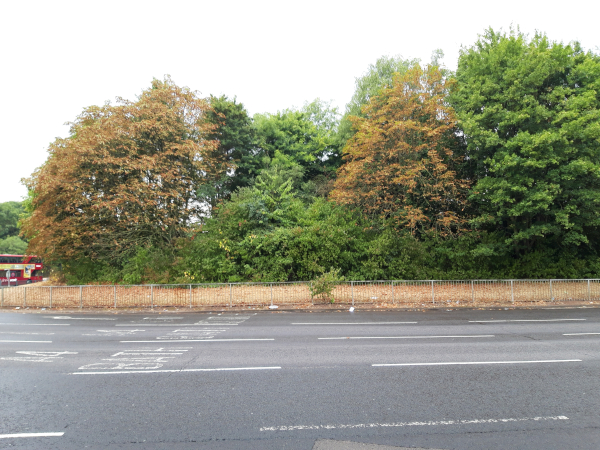
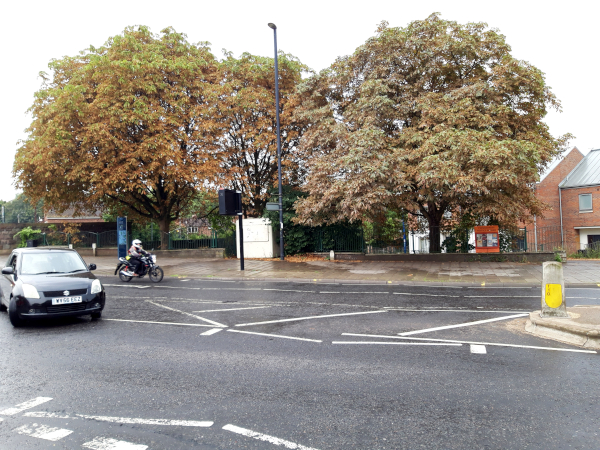
The horse chestnut is native to the Pindus Mountains mixed forests and Balkan mixed forests of south east Europe; it was first introduced to the UK from those areas then under the administration of the Ottoman Turks in the late 16th century, being widely planted in parks, gardens, streets and on village greens.
The tree gets its English name of horse chestnut from the scars the leaves leave on the twig when they fall, which resembles an inverted horse shoe with nail holes.
Besides the children’s game of conkers, conkers are also used horse medicines, as additives in shampoos and as a starch substitute. Chemicals extracted from conkers can be used to treat strains and bruises.
Just like the local hawthorns are an indicator of the approach of spring for your ‘umble scribe (posts passim), the these horse chestnuts fulfil a similar role for the approach of autumn. Below is a Woodland Trust video of the life of a horse chestnut throughout the year.
A piece of artwork has appeared on the parched grass of Peel Street Green Space, which occupies the ground between Pennywell Road and Riverside Park on the far side of Peel Street Bridge over the Frome (aka the Danny in east Bristol. Ed.).
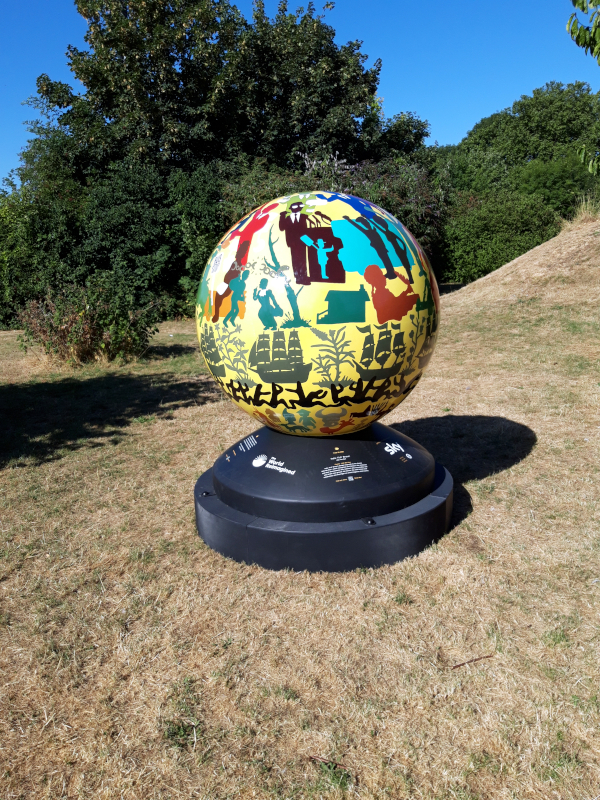
Its arrival seems to have pre-empted the Bristol Post, which today wrote:
A new public art trail reflecting on colonial histories and the impact of the slave trade is coming to Bristol.
More than 100 artist-designed globe sculptures will appear in seven cities across the UK from Saturday and will be free to view by the public until October 31.
The project, which is organised by The World Reimagined, aims to explore the UK’s relationship with the Transatlantic slave trade, its impact on society and how action can be taken to make racial justice a reality. The designs of the globes produced by the commissioned artists explore themes such as the culture of Africa before the slave trade and an ode to the Windrush generation.
The World Reimagined has sited 103 unique Globes across the 10 trails in 7 host cities across the UK – Bristol, Birmingham, Leeds, Leicester, Liverpool, London and Swansea. All the trails will be connected to a digital platform that enables visitors to explore the collection and the history it reflects.
The Peel Street globe is entitled Like The Sun and was created by Felix ‘FLX’ Braun, a Bristol-based a contemporary fine artist and muralist
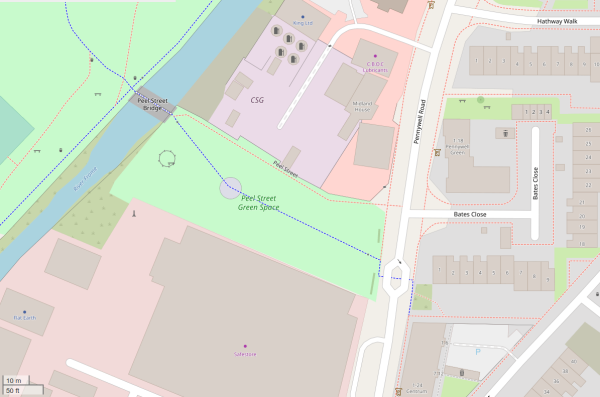
The Bristol trail is handily shown on a map by The World Reimagined on which the globe installations are termed ‘Learning Globes‘.

Generally one only notices bees in the inner city in ones and twos. However, bees establish new colonies by swarms consisting of a queen and legions of workers (her daughters). On Monday your ‘umble scribe spotted this swarm in Chaplin Road in Bristol’s inner city.
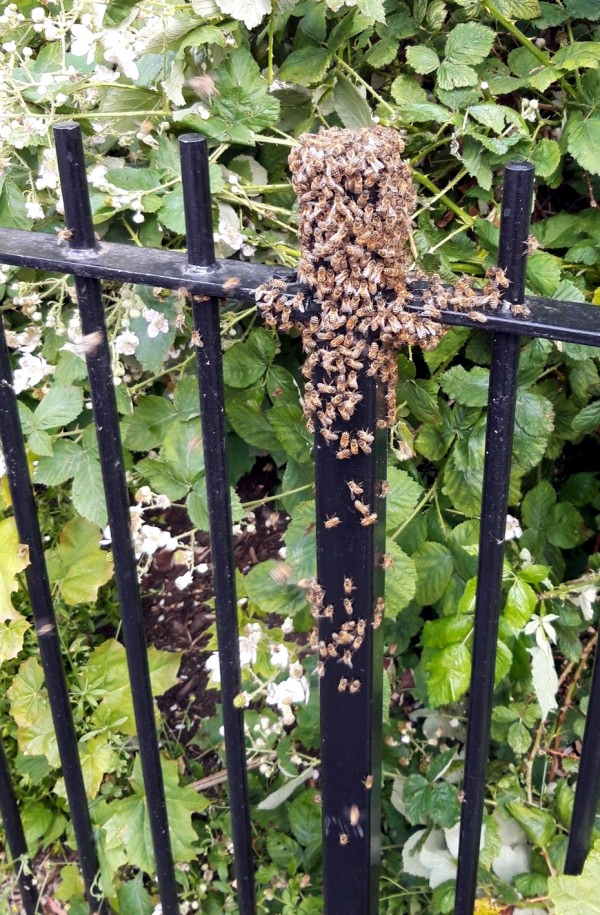
A neighbour informed me that a beekeeper was supposed to have turned up the previous evening to deal with them. S/he had evidently paid a visit by beer o’clock when your correspondent ventured forth for a pint.
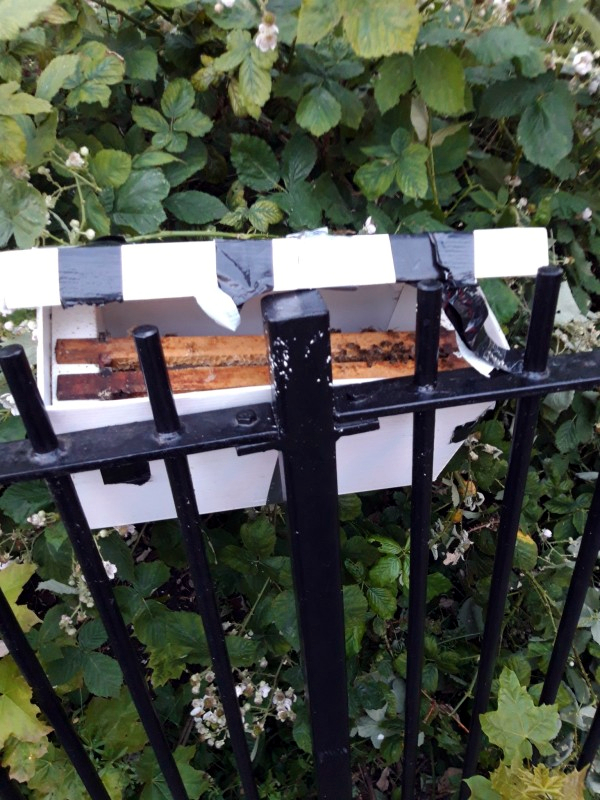
The bees have entered the box with the hive frames, presumably after the queen was first located and transferred to the box by the beekeeper.
Bees have long been renowned for their industry. In Old English (aka Anglo-Saxon Ed.) the eponymous hero of Beowulf has beo (i.e. bee) as the first syllable of his name; when coupled with wulf (i.e wolf, predator), this implies Beowulf was a very busy and ultimately successful hunter. In medieval times, bees themselves were regarded as a potent symbol of chastity in Christianity, whilst in Islam, honey was believed to have spiritual and physical healing powers. These religious and cultural beliefs encouraged beekeeping on a vast scale among landowners and peasants alike.
Coming up to the 18th century, the English poet, painter and printmaker William Blake wrote the following of bees in his “The Marriage of Heaven and Hell“:The busy bee has no time for sorrow.
And finally on busy bees, from the 18th to the 20th century and the late Arthur Askey.
Whilst your ‘umble scribe has done his best to avoid the jubilee jollities, he cannot help noticing that, in addition to the usual criticism found on social media, two of the pillars of the British establishment, namely the Church of England and the monarchy itself, have been indulging in some very subtle digs at the government nominally under the supposed leadership of party-time alleged prime minister Alexander Boris de Pfeffel Johnson.
After being booed by a flag-waving, pro-Establishment crowd on his way into a thanksgiving service for Elizabeth Mountbatten-Windsor, Johnson gave a bible reading. The text chosen by whoever in the Church of England devised the order of service was a master stroke as it included the text of Phillipians 4:8, which reads as follows:
Finally, brothers and sisters, whatever is true, whatever is noble, whatever is right, whatever is pure, whatever is lovely, whatever is admirable—if anything is excellent or praiseworthy—think about such things.
Johnson’s lack of integrity is a matter of public record that extends back at least as far as his time as the Telegraph’s Brussels correspondent, when he would regularly tells lies and fabricate stories about what horrors the European Commission was hatching, thus adding further fuel to the xenophobic fire that eventually kindled into Brexit. Johnson has twice been sacked for lying, in addition to which he’s lied to his wives, his mistresses, parliament, the public and even to Elizabeth Mountbatten-Windsor herself. One of his employers, Max Hastings, is on record as saying: “Boris is a gold medal egomaniac. I would not trust him with my wife nor – from painful experience – my wallet.”
There is nothing pure, lovely, admirable, excellent or praiseworthy about the moral vacuum that resides beneath the superannuated blonde toddler haircut.
However, Johnson was not the only cabinet minister to be subjected to derision and ridicule.
Step forward please Priti Patel, a woman unfit to clean a public toilet inexplicably promoted way beyond her competence to the post of Home Secretary.
Patel’s choice of Barbie pink outfit to attend the jubilee thanksgiving service drew plenty of unpleasant comparisons on social media with Dolores Umbridge, a fictional character from the Harry Potter canon, who is described as “a fat, toad-like woman, with a wide, slack mouth, and a large bow usually in her hair and “one of the most hated, as well as the most compelling, villains in the series“.

Any resemblance to a cruel, inhuman and racist cabinet minister is purely coincidental.
Nevertheless, it was not only wags on Twitter who mocked the alleged home secretary. Buckingham Palace also joined in the fun.
Although the queen did not attend yesterday evening’s jubilee concert in person, she did appear in a specially commissioned video, as shown below. Here Paddington Bear who hails from ‘darkest Peru‘, arrived in this country wearing around his neck a label stating ‘Please look after this bear. Thank you.‘, and is perhaps this country’s best known fictional refugee (classified by the home secretary and her department as an illegal migrant. Ed.) is shown having tea at Buck House.
Patel would no doubt have the ursine migrant on one of her much-vaunted deportation flights to Rwanda.
Today, 23rd April, is the saint’s day of the patron saint of England, St George.
<However, George is not just the patron saint of England. Other states and nations having this Cappadocian Greek who served as a Roman soldier and died in 303 CE include Ethiopia and Georgia, the Spanish regions of Catalonia and Aragon, along with the Russian capital Moscow.Very little is known about George’s life, but he is believed to have been martyred in one of the waves of persecution that preceded the accession in 306 CE of the Roman emperor Constantine.
According to Wikipedia, the legend of St George and the dragon was first recorded in the 11th century in Georgia and arrived in Europe in the 12th.
In England specifically, St George had by the 14th century, been declared both the patron saint and the protector of the royal family. and thus replaced Edmund the Martyr (also known as St Edmund or Edmund of East Anglia. Ed.) as England’s patron saint. Edmund, who died on 20 November 869 had been king of East Anglia from about 855 until his death at the hands of Viking invaders.
George’s dragon-slaying efforts were ultimately worthwhile, not only for the the city of Silene, Libya, which the dragon was menacing, but ultimately for the English, as was pointed out yesterday on Twitter by some wit recalling WW2-style the benefits of the good saint’s deed.

If you don’t feel like celebrating the life and work of George of Lydda, the 23rd April is also recorded as the day upon which playwright William Shakespeare was baptised.
Ever since newspapers mostly did away with sub-editors some while ago as a cost-saving measure, standards of written journalism have visibly declined. Poor punctuation and clumsy use of language have become more commonplace. Sub-editors used to play a vital role, helping reporters to become better writers and thus journalists.
Nowadays, authors are supposed to check their own output.
Even with the best will in the world, it is sometimes difficult to stop errors in one’s own copy.
That being said, there is an absolute howler in today’s online edition of the Shropshire Star, as per the screenshot below
Unless young goats really are to used to promote the safety of Newtown’s women and girls, which is not readily apparent from the subsequent copy, one would think that checking a headline before hitting the ‘Publish is a skill that should be taught on journalism courses. 😀
The headline has since been corrected.
What a difference a couple of days make.
Just yesterday this blog reported on the unofficial renaming of Slaver’s Road in Easton, Bristol (posts passim).
Today your ‘umble scribe ambled past the end of the road and observed the following where the “Colston Four Road” unofficial street sign had recently been installed.
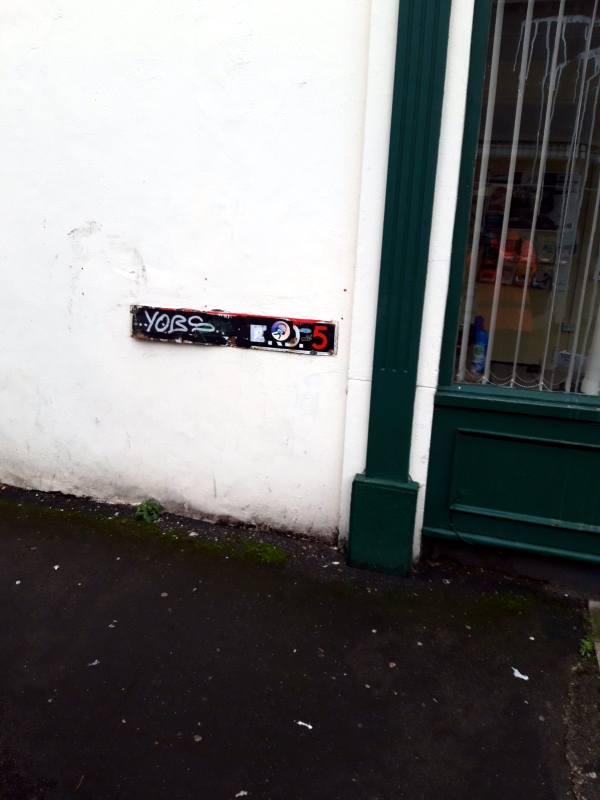
Officially changing a street name is a long, involved process in which an overwhelming majority of the property owners have to agree to a proposed change.
Changes are much swifter in the unofficial world.
Nearly half a year ago, your ‘umble scribe reported that Colston Road in Easton, a road named after Bristol-born slave trader, insider share dealer, financier, religious bigot and former Tory MP for the city had been unofficially renamed as Toppled Road (posts passim).
On the other side of the road from the crudely painted Toppled Street on the side of a house, a new more official-looking street name sign has appeared in recent days.
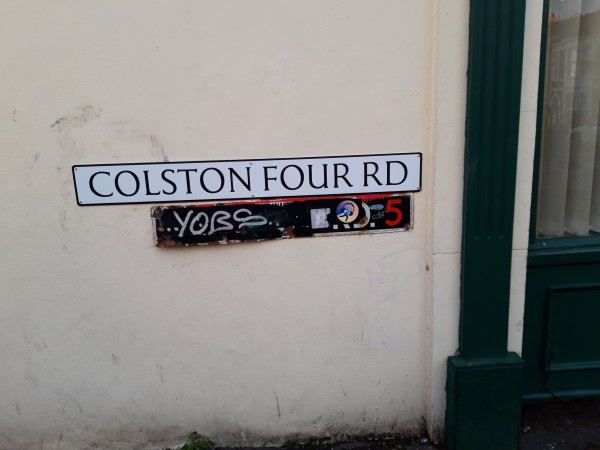
The new unofficial sign commemorates the acquittal by a Bristol jury of the so-called Colston Four who were tried for criminal damage when Colston’s statue in the centre of the city was brought down and dumped in the city docks during the course of a Black Lives Matter protest on 7 June 2020.
Local residents have been uneasy for years about living in a street named after a so-called philanthropist who made his money from kidnapping, trafficking and exploiting to death thousands of unwilling Africans and have long campaigned for it to be changed, along with other reminders of the late Victorian Cult of Colston.
Speaking to Easton councillor Barry Parsons yesterday, your correspondent asked him for an update on how the name change was progressing.
He responded that the whole matter of street renamings was one of the topics handed over to the We Are Bristol History Commission, which has just recently issued its recommendations in respect of Colston’s statue, backing the general public view it belongs henceforth in a museum.
However, any words of wisdom from the Commission regarding the fate of Bristol’s street names commemorating Eddie the Slaver have yet to be uttered and it would appear the matter has been (so to say) kicked into the long grass.
In a final twist, the Bristol Post/Bristol Live is claiming that some of its less perceptive readers are “outraged“ at the change of name, with some actually believing the new sign has been erected by the city’s perfidious council, even though the sign’s design is clearly different to that used by the local authority, whose standard modern street name signs all include the first 3 characters of the road’s postcode